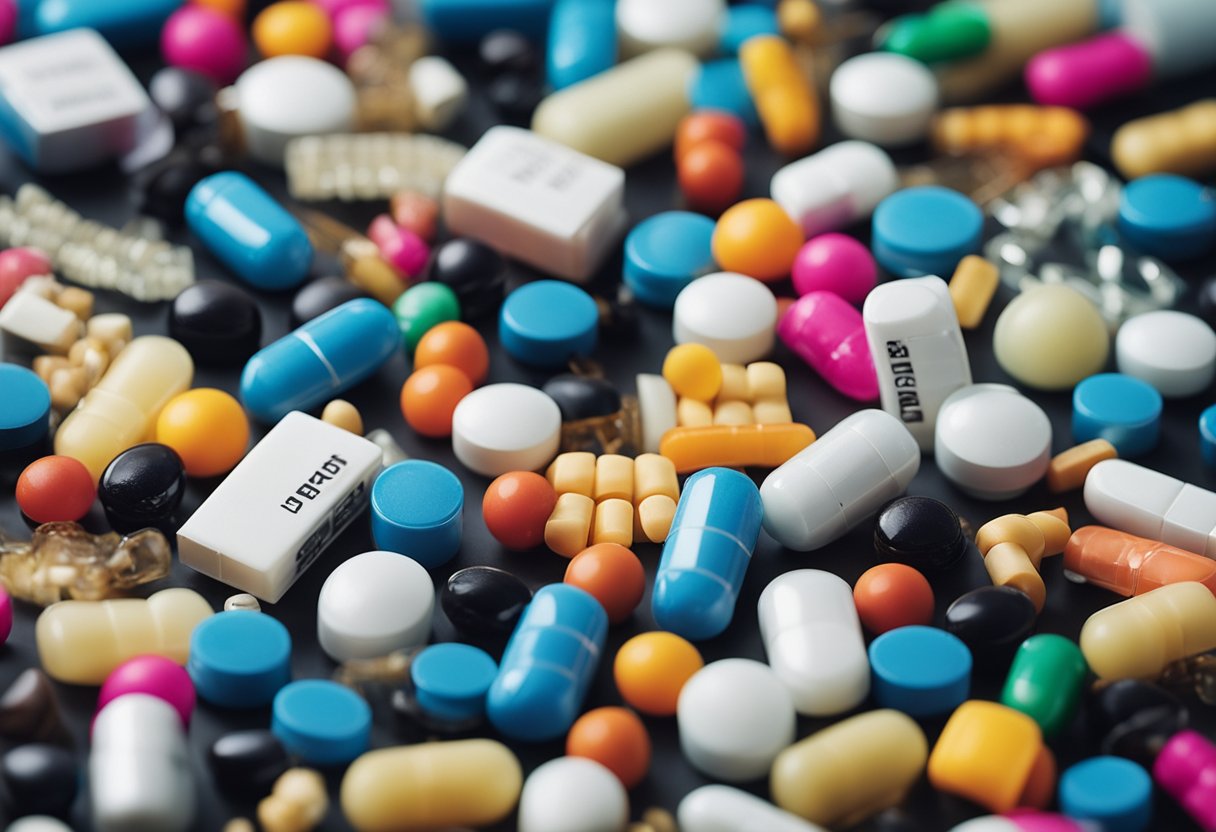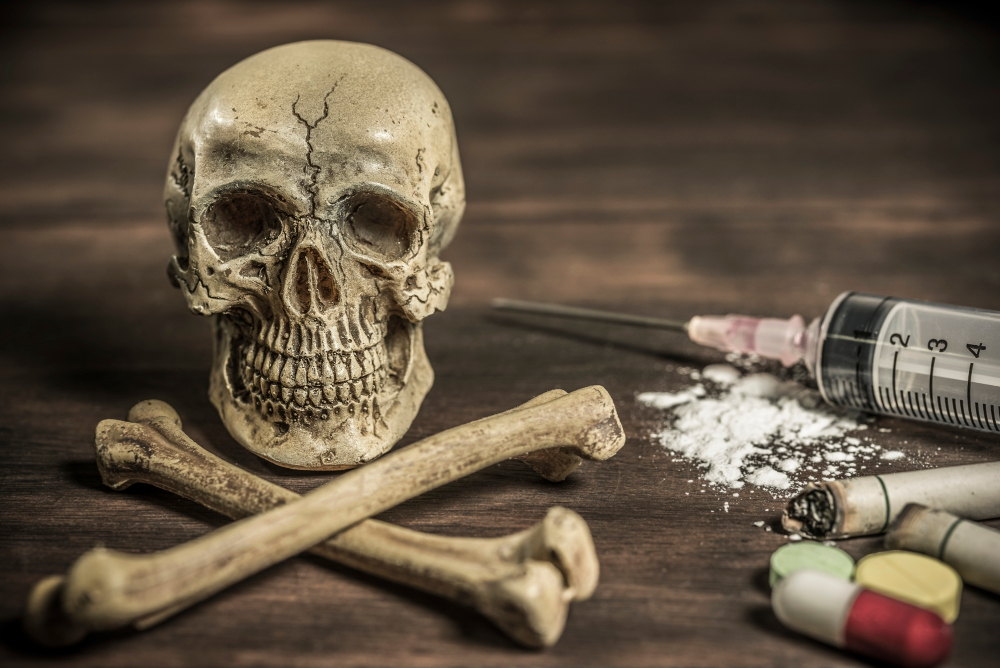Addiction is a complex and multifaceted issue that affects millions of people worldwide. While many substances can be addictive, some are more addictive than others. The question of which is the most addictive stimulant drug has been the subject of debate for decades, with different experts and studies offering varying opinions.
Understanding addiction is crucial to understanding the most addictive drugs. Addiction is a chronic disease that affects the brain’s reward, motivation, and memory functions. It is characterized by compulsive drug-seeking and use despite harmful consequences. Addiction can develop from any substance that activates the brain’s reward system, leading to the release of dopamine, a neurotransmitter associated with pleasure and reward.
Key Takeaways
- Addiction is a chronic disease that affects the brain’s reward, motivation, and memory functions.
- Different categories of drugs have different addictive potentials, with opioids and stimulants being among the most addictive.
- Treatment and prevention are crucial to addressing drug addiction and its health and social consequences.
Understanding Addiction
Addiction is a chronic disease that affects the brain and behavior. It is characterized by compulsive drug seeking and use despite the harmful consequences. Addiction can cause changes in the brain’s reward system, making it difficult for an individual to control their behavior.
Brain’s Reward System
The brain’s reward system is a complex network of structures that is responsible for regulating motivation, pleasure, and emotional responses. It is activated when an individual engages in pleasurable activities such as eating, drinking, or having sex. The reward system is also activated by drugs of abuse, which can lead to addiction.
Dopamine and Pleasure
Dopamine is a neurotransmitter that is involved in the brain’s reward system. It is released in response to pleasurable activities and drugs of abuse, leading to feelings of pleasure and reward. Over time, drug use can lead to changes in the brain’s reward system, making it difficult for an individual to experience pleasure without the drug.
Dependence and Tolerance
Dependence and tolerance are two common features of addiction. Dependence occurs when an individual becomes physically or psychologically dependent on a drug. Tolerance occurs when an individual needs increasing amounts of a drug to achieve the desired effect. Both dependence and tolerance can lead to withdrawal symptoms when an individual stops using the drug.
In conclusion, addiction is a chronic disease that affects the brain and behavior. It is characterized by compulsive drug seeking and use despite the harmful consequences. Addiction can cause changes in the brain’s reward system, making it difficult for an individual to control their behavior. Dopamine is a neurotransmitter that is involved in the brain’s reward system and is released in response to pleasurable activities and drugs of abuse. Dependence and tolerance are two common features of addiction that can lead to withdrawal symptoms when an individual stops using the drug.
Categories of Addictive Substances
Addictive substances can be categorized into three main categories: stimulants, opioids, and depressants. These categories of drugs, including addictive stimulants, are classified based on the effects they have on the central nervous system and dopamine levels in the brain.
Stimulants
Stimulants are drugs that increase alertness, attention, and energy. They are often used to treat attention deficit hyperactivity disorder (ADHD) and narcolepsy. Some common stimulants include caffeine, nicotine, amphetamines, and cocaine. While caffeine and nicotine are legal and widely used, amphetamines and cocaine are illegal and highly addictive.
Opioids
Opioids are drugs that are derived from the opium poppy plant or synthetic versions of it. They are used to relieve pain and induce euphoria. Opioids include prescription painkillers such as oxycodone, hydrocodone, and fentanyl, as well as illegal drugs such as heroin. Opioids are highly addictive and can lead to overdose and death.
Depressants
Depressants are drugs that slow down the central nervous system and produce a calming effect. They are often used to treat anxiety and sleep disorders. Some common depressants include alcohol, benzodiazepines, and barbiturates. While alcohol is legal and widely used, benzodiazepines and barbiturates are prescription drugs that are highly addictive and can lead to overdose and death.
It is important to note that not all addictive substances are illegal. Prescription drugs can be just as addictive as illegal drugs, and their abuse can have serious consequences. It is important to use prescription drugs only as directed by a healthcare professional and to never share them with others.
Profiles of Common Addictive Drugs
Addiction is a complex disease that affects people from all walks of life. It is caused by a combination of factors, including genetics, environment, and lifestyle. Many drugs are addictive, and they can have serious consequences on a person’s health and well-being. Here are some common addictive drugs and their profiles:
Nicotine
Nicotine is a highly addictive drug found in tobacco products. It is a stimulant drug that increases alertness and concentration, but it can also cause anxiety, irritability, and the potential to become addicted. Nicotine addiction is one of the hardest addictions to break, and it is responsible for millions of deaths worldwide each year. According to the National Institute on Drug Abuse, smoking cigarettes is the leading cause of preventable death in the United States, and it is responsible for one in five deaths each year.
Alcohol
Alcohol is a legal drug that is widely used and abused. It is a depressant that slows down the central nervous system, causing a range of effects from relaxation to loss of consciousness. Alcohol addiction can lead to a range of health problems, including liver disease, heart disease, and cancer. According to the National Institute on Alcohol Abuse and Alcoholism, alcohol is the third leading preventable cause of death in the United States.
Cocaine
Cocaine is a powerful stimulant that is highly addictive. It is derived from the leaves of the coca plant and is usually snorted, smoked, or injected. Cocaine addiction can lead to a range of health problems, including heart attacks, strokes, and seizures. According to the National Institute on Drug Abuse, cocaine is a highly addictive drug that can cause intense cravings and withdrawal symptoms.
Heroin
Heroin is an illegal drug that is highly addictive. It is derived from morphine, which is a natural substance found in opium poppy plants. Heroin addiction can lead to a range of health problems, including respiratory failure, liver disease, and HIV/AIDS. According to the National Institute on Drug Abuse, heroin is a highly addictive drug that can cause intense cravings and withdrawal symptoms.
Methamphetamine
Methamphetamine is a highly addictive drug that is similar in structure to amphetamine. It is a stimulant that increases alertness and concentration, but it can also cause anxiety and paranoia. Methamphetamine addiction can lead to a range of health problems, including heart attacks, strokes, and seizures. According to the National Institute on Drug AbuseCrack cocaine, similar to methamphetamine, is a highly addictive stimulant drug that can cause intense cravings and withdrawal symptoms.
These are just a few examples of common addictive drugs. It is important to remember that addiction is a disease, and it can be treated with the right help and support.
Marijuana (Cannabis)
Marijuana, also known as cannabis, is a psychoactive drug that is commonly used for its mind-altering effects. It contains THC (tetrahydrocannabinol), which is responsible for the drug’s psychoactive properties. While marijuana is often perceived as less addictive than other drugs, it can still lead to dependence and addiction in some individuals. Long-term marijuana use can have adverse effects on memory, cognition, and mental health.
Prescription Opioids
Prescription opioids are powerful pain-relieving medications that can also produce feelings of euphoria. Opioids such as oxycodone, hydrocodone, and morphine are commonly prescribed to manage pain, but they can be highly addictive. Prolonged use or misuse of prescription opioids can lead to physical dependence, addiction, and overdose. The opioid epidemic has become a significant public health crisis in many countries, leading to thousands of overdose deaths each year.
Benzodiazepines
Benzodiazepines, or “benzos,” are prescription drugs commonly used to treat anxiety, insomnia, and seizures. Drugs like Xanax, Valium, and Ativan are examples of benzodiazepines. While benzodiazepines can be effective for short-term treatment, they are also highly addictive and can lead to tolerance, dependence, and withdrawal symptoms. Misuse or excessive use of benzodiazepines can result in respiratory depression, coma, and death.
MDMA (Ecstasy/Molly)
MDMA, commonly known as ecstasy or molly, is a synthetic drug that alters mood and perception. It is often used recreationally in social settings for its euphoric effects. However, MDMA can be addictive and has potential long-term effects on brain function and mental health. Prolonged use of MDMA can lead to memory problems, anxiety, depression, and other psychiatric disorders.
Inhalants
Inhalants are a diverse group of volatile substances that are inhaled to produce mind-altering effects. Common inhalants include household products like glue, paint thinners, and aerosol sprays. Inhalant abuse can lead to short-term effects such as dizziness, hallucinations, and loss of consciousness. Long-term inhalant abuse can cause serious damage to the brain, liver, kidneys, and other organs. Inhalant addiction can be hazardous due to the high risk of sudden death from overdose or accidents.
Health Consequences of Drug Addiction
Drug addiction can have severe consequences on an individual’s health, both mentally and physically. The following subsections will discuss the impact of drug addiction on mental health, physical health, and the risks of overdose and death.
Mental Health Impact
Drug addiction can lead to a range of mental health issues, including depression, anxiety, and paranoia. According to a study by the National Institute on Drug Abuse (NIDA), drug addiction can also cause changes in the brain that can lead to impaired decision-making, memory loss, and difficulty learning.
Physical Health Risks
Drug addiction can also have severe physical health consequences. For example, injecting drugs can lead to infections, abscesses, and collapsed veins. In addition, drug addiction can cause damage to the heart, liver, and other organs. According to NIDA, drug addiction can also lead to a weakened immune system, making individuals more susceptible to infections and other illnesses.
Overdose and Death
One of the most significant risks of drug addiction is the potential for overdose and death. Overdose occurs when an individual takes too much of a drug, leading to severe respiratory depression, coma, and death. According to the Centers for Disease Control and Prevention (CDC), drug overdoses are now the leading cause of death in the United States, with over 70,000 overdose deaths in 2019 alone.
In conclusion, drug addiction can have severe consequences on an individual’s health, both mentally and physically. The risks of overdose and death are also significant, making it essential to seek help and treatment if struggling with drug addiction.
Legal and Social Aspects of Drug Use
Regulation and Control
Drug use is a complex issue that involves legal and social aspects. The regulation and control of drug use is the responsibility of government agencies such as the Drug Enforcement Administration (DEA) and the Centers for Disease Control and Prevention (CDC). These agencies work to ensure that drugs are used safely and legally.
The DEA is responsible for enforcing federal drug laws and regulations. They work to prevent the illegal distribution and substance abuse of drugs such as cocaine, heroin, crack cocaine, and marijuana. The CDC, on the other hand, is responsible for monitoring drug use and its impact on public health. They provide information on drug-related illnesses and deaths, as well as the impact of drug use on society.
Impact on Society
Drug use has a significant impact on society. It affects individuals, families, and communities. The social impact of drug use includes increased crime rates, decreased productivity, and negative health outcomes. Drug use can also lead to addiction, which can have a devastating impact on an individual’s life.
The legal and social aspects of drug use are closely intertwined. Laws and regulations are put in place to protect society from the negative impact of drug use. However, the effectiveness of these laws and regulations is often questioned. Some argue that drug laws are too harsh and lead to the criminalization of individuals who need help, while others argue that drug laws are necessary to protect society.
In conclusion, the legal and social aspects of drug use are complex and multifaceted. The regulation and control of drug use is the responsibility of government agencies such as the DEA and the CDC. The impact of drug use on society is significant and includes increased crime rates, decreased productivity, and negative health outcomes.
Treatment and Recovery

When it comes to addiction, treatment, and recovery are crucial for those who want to overcome their addiction. Treatment options vary depending on the severity of the addiction, the substance being used, and individual circumstances.
Detoxification
Detoxification, or detox, is often the first step in addiction treatment. This process involves removing the substance from the body and managing withdrawal symptoms. Detoxification can be a difficult and uncomfortable process, and it is important to seek medical supervision during this time.
Medications
Medications can be an important part of addiction treatment, particularly when treating addictions to opioids, alcohol, and nicotine. Medications can help manage withdrawal symptoms and cravings, making it easier for individuals to remain sober. However, it is important to note that medication should be used in conjunction with therapy and other forms of treatment.
Therapies
Therapy is a crucial part of addiction treatment and recovery. Various therapies are available, including cognitive-behavioral therapy, motivational interviewing, and group therapy. These therapies can help individuals understand the root causes of their addiction, develop coping mechanisms, and build a support system.
Overall, treatment and recovery from addiction is a complex process that requires a combination of approaches. Individuals need to seek professional help and support to successfully overcome their addiction.
Prevention and Education

Prevention and education are key components in the fight against addiction. Educating individuals about the dangers of drug use and providing them with the skills and resources to make healthy choices can significantly reduce the risk of addiction.
Prevention efforts should be targeted toward all age groups and should focus on promoting healthy behaviors, building resilience, and creating supportive environments. This can include providing information about the risks associated with drug use, teaching coping skills, and promoting positive social norms.
Education is also an important aspect of prevention. Individuals must be provided with accurate information about drugs and addiction so that they can make informed decisions. This can include information about the risks associated with drug use, the signs and symptoms of addiction, and the resources available for those who need help.
Prevention and education efforts should be tailored to the specific needs of different populations. For example, prevention programs for children and adolescents should focus on building resilience, promoting healthy behaviors, and providing positive role models. Programs for adults may focus on stress management, coping skills, and building social support networks.
Environmental factors can also play a role in prevention efforts. Creating safe and supportive environments can help to reduce the risk of addiction. This can include policies and regulations that limit access to drugs, as well as programs that promote healthy behaviors and provide support for those in need.
Overall, prevention and education are critical components in the fight against addiction. By providing individuals with the skills and resources they need to make healthy choices, we can reduce the risk of addiction and promote a healthier society.
Frequently Asked Questions
Which substances have the highest potential for dependency?
Some drugs have a higher potential for dependency than others. According to the National Institute on Drug Abuse, the most addictive drugs are those that affect the brain’s reward system, such as cocaine, methamphetamine, and heroin.
What characteristics make a drug highly addictive?
A drug’s potential for addiction depends on various factors, including how it affects the brain’s reward system, how quickly it produces a high, and how easily it can be obtained. Drugs that produce an intense high and are readily available are more likely to be abused and lead to addiction.
How do opioids rank in terms of addiction risk?
Opioids are highly addictive drugs that include prescription painkillers like oxycodone and hydrocodone, as well as illicit drugs like heroin. According to the Addiction Group, prescription opioids are the most commonly abused opioids and are responsible for a significant number of overdose deaths.
Can legal drugs be just as addictive as illegal ones?
Yes, legal drugs can be just as addictive as illegal ones. Prescription drugs like opioids, benzodiazepines, and stimulants have a high potential for abuse and addiction. Additionally, over-the-counter drugs like cough syrup and cold medicine can be abused for their psychoactive effects.
What is the impact of dopamine on drug addiction?
Dopamine is a neurotransmitter that plays a crucial role in the brain’s reward system. When drugs are abused, they flood the brain with dopamine, leading to feelings of pleasure and euphoria. Over time, the brain becomes dependent on the drug to release dopamine, leading to addiction.
How does withdrawal severity relate to addiction levels?
Withdrawal symptoms can be a sign of addiction severity. The more severe the withdrawal symptoms, the more likely it is that an individual is addicted to the drug. Withdrawal symptoms can include nausea, vomiting, anxiety, and depression. In some cases, withdrawal can be life-threatening and require medical intervention.
Overall, drug addiction is a complex issue that depends on various factors, including genetics, environment, and individual vulnerability. It’s crucial to seek professional rehab help if you or someone you know is struggling with a use disorder.






